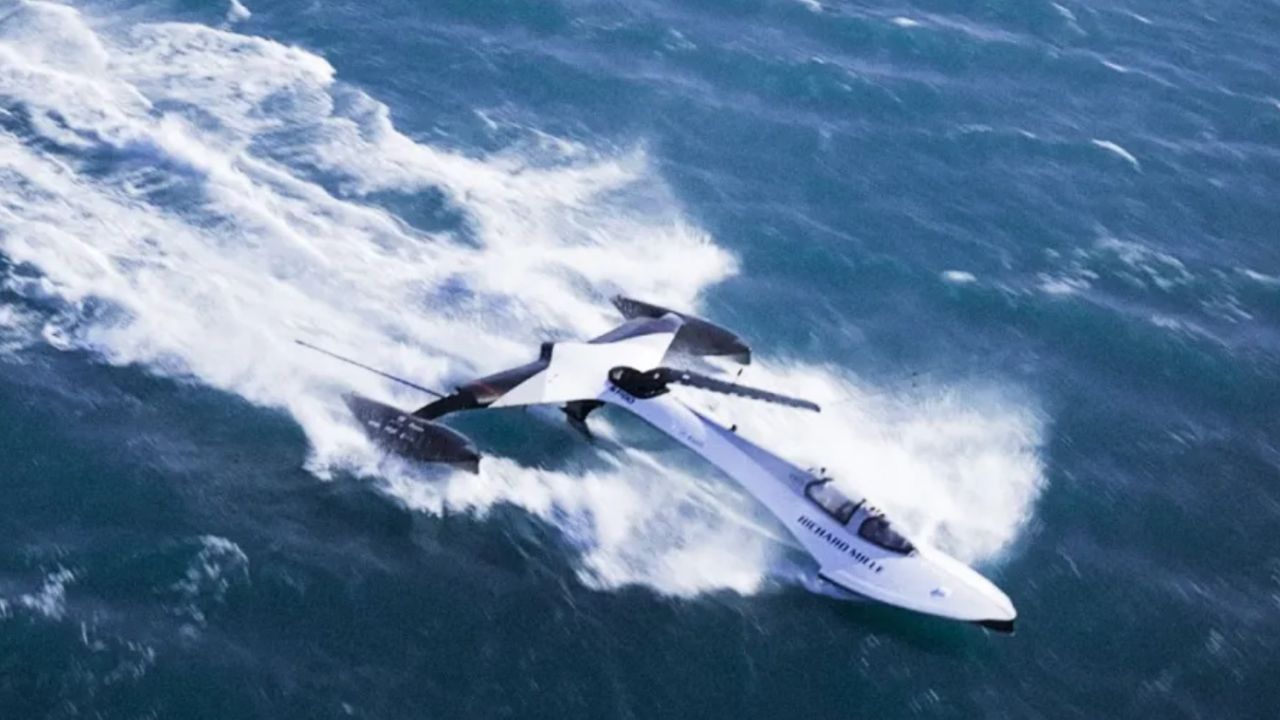
The SP80 trimaran, a revolutionary boat with foiler technology, recently reached an impressive speed of 51 knots (94.5 km/h) and is now preparing to break the 54-knot (100 km/h) barrier—considered the nautical equivalent of the sound barrier.
The SP80’s ultimate goal is to surpass the current record of 65.45 knots (121 km/h), set by Paul Larsen in 2012 with the Vestas Sailrocket II.
Breaking Barriers in Sailing
Reaching such high speeds without a motor is an extreme challenge. This is because, once surpassing 54 knots, cavitation (the formation of vapor bubbles under the water) can drastically reduce hull efficiency. The SP80’s design was created to overcome this obstacle and achieve unprecedented speeds.
“Our last run above 50 knots allowed us to observe the foil’s behavior at a speed range rarely explored in the sailing world,” said Benoît Gaudiot, SP80’s kite pilot. “We chose to slow down before reaching 52 knots as a precaution, but the data indicates that we encountered no significant barriers.”
Innovative Design and High Performance
The SP80 measures 10 meters in length and features an ultra-lightweight design. With a carbon fiber hull weighing only 150 kg, the vessel functions more like a kitesurfing board than a traditional sailboat. Its compact cockpit houses only the pilot and co-pilot, ensuring maximum aerodynamics.
Its standout feature is a giant kite, which harnesses wind power to generate speed and thrust. According to the team, the boat has a theoretical top speed of 80 knots (148 km/h)—a true “rocket” on the water!
Despite sponsorship from Swiss watchmaker Richard Mille, the SP80 was born as a low-budget startup, founded by three friends: Mayeul van den Broek, Xavier Lepercq, and Benoît Gaudiot. The project took over two years and 40,000 hours of development, with multiple improvements before reaching its current state.
Challenges and the Race for the World Record
To ensure a valid record, the SP80 cannot use advanced electronics or lithium batteries for automatic sail adjustments, as seen in the America’s Cup and SailGP. It relies solely on wind power.
For this reason, the team chose to test the boat in one of the windiest locations in the world, Leucate, France. “The boat is very close to its technical maximum,” says Mayeul van den Broek. “Our challenge now is to master its piloting and reach speeds above 70 knots (130 km/h) with full control.”
However, the race for the record is fierce. A French competitor, Syroco, also uses a kite to propel its boat, but with one key difference: the vessel is suspended above the water by an innovative lift system. Its goal is to reach an astonishing 80.99 knots (150 km/h), surpassing the SP80.
The Future of High-Speed Sailing
With ongoing tests and weather conditions being monitored, the SP80 team believes the record could be broken in the coming weeks. If the boat reaches its full potential, it could usher in a new era of wind-powered navigation.
The competition between SP80 and Syroco promises to take speed on the water to an unprecedented level. Who will be the first to surpass the 80-knot mark?
Source: RobbReport. This content was created with the help of AI and reviewed by the editorial team.

